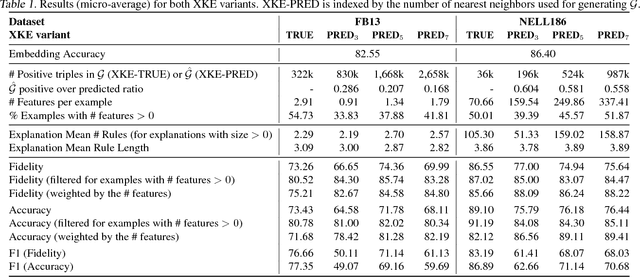Get our free extension to see links to code for papers anywhere online!Free add-on: code for papers everywhere!Free add-on: See code for papers anywhere!
Glauber De Bona
Interpreting Embedding Models of Knowledge Bases: A Pedagogical Approach
Jun 20, 2018Authors:Arthur Colombini Gusmão, Alvaro Henrique Chaim Correia, Glauber De Bona, Fabio Gagliardi Cozman
Figures and Tables:







Abstract:Knowledge bases are employed in a variety of applications from natural language processing to semantic web search; alas, in practice their usefulness is hurt by their incompleteness. Embedding models attain state-of-the-art accuracy in knowledge base completion, but their predictions are notoriously hard to interpret. In this paper, we adapt "pedagogical approaches" (from the literature on neural networks) so as to interpret embedding models by extracting weighted Horn rules from them. We show how pedagogical approaches have to be adapted to take upon the large-scale relational aspects of knowledge bases and show experimentally their strengths and weaknesses.
* presented at 2018 ICML Workshop on Human Interpretability in Machine
Learning (WHI 2018), Stockholm, Sweden
Via
 Add to Chrome
Add to Chrome Add to Firefox
Add to Firefox Add to Edge
Add to Edge